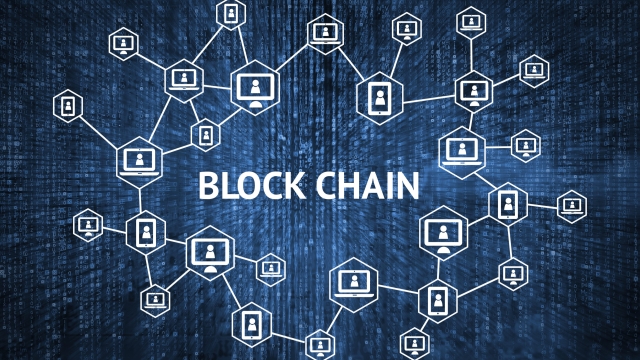The digital revolution continues to evolve, and with it comes the promise of a decentralized future. At the forefront of this transformation are Web3 and Decentralized Finance (DeFi), two concepts that are reshaping the way we interact with technology and finance. Web3 encompasses the next generation of the internet, where blockchain technology and decentralized applications (dapps) replace centralized systems, allowing for increased transparency, security, and user control. On the other hand, DeFi refers to a rapidly growing ecosystem built on blockchain, offering traditional financial services in a decentralized manner, revolutionizing the way we borrow, lend, trade, and invest using cryptocurrency. By exploring the potential and possibilities of Web3 and DeFi, we can unlock a world of opportunities and gain a deeper understanding of this transformative technology. So, let’s dive into this exciting journey of demystifying the future of Web3 and DeFi.
Understanding Web3
Web3 refers to the next evolution of the internet. It represents a decentralized version of the web where users have more control over their data and online interactions. Unlike Web2, which is the current state of the internet dominated by big tech companies, Web3 aims to empower individuals by using blockchain technology to create a more transparent and secure online ecosystem.
At the heart of Web3 is blockchain, a distributed ledger technology that allows for the secure and immutable recording of transactions across a network of computers. Blockchain ensures that data is not owned or controlled by any single entity, increasing trust and reducing the need for intermediaries. This technology forms the foundation of Web3, enabling decentralized applications (DApps) and services to flourish.
One of the key applications of Web3 is in the realm of decentralized finance (DeFi). DeFi enables the transformation of traditional financial systems into open and transparent protocols that are accessible to anyone with an internet connection. Through smart contracts deployed on blockchains, DeFi platforms offer a range of financial services such as lending, borrowing, and trading without the need for intermediaries like banks.
Cryptocurrency is another critical component of Web3. It serves as a digital representation of value that can be transferred and traded within the Web3 ecosystem. Cryptocurrencies, such as Bitcoin and Ethereum, use cryptographic techniques to secure transactions and create scarcity. These digital assets play a vital role in enabling Web3 applications, including DeFi, by providing a native medium of exchange and incentivizing network participation.
Kadena
In summary, Web3 is a paradigm shift that aims to decentralize the internet, giving individuals more control over their online experiences. With blockchain as its foundation and powered by cryptocurrencies, Web3 paves the way for innovations like DeFi, revolutionizing the way financial services are accessed and democratizing the internet as a whole.
Exploring DeFi
In recent years, Decentralised Finance (DeFi) has emerged as a revolutionary concept that leverages the power of blockchain technology and cryptocurrencies to reshape the traditional financial landscape. Unlike traditional financial systems that are centralized and rely on intermediaries, DeFi aims to bring transparency, accessibility, and self-sovereignty to financial transactions.
At its core, DeFi involves the use of smart contracts, which are self-executing programs running on blockchain networks like Ethereum. These smart contracts enable the creation and execution of various financial instruments such as loans, insurance, asset trading, and more. By removing the need for intermediaries like banks or insurance companies, DeFi allows users to interact directly with these protocols, often referred to as decentralized applications or DApps.
One of the key advantages of DeFi is its ability to provide financial services to anyone with an internet connection, bypassing the traditional barriers of geography, identity, and status. This opens up opportunities for the unbanked and underbanked populations to access financial services that were previously inaccessible to them. Additionally, DeFi protocols also offer higher levels of transparency, as all transactions and contract logic are recorded on the blockchain, making it auditable and verifiable by anyone.
As the DeFi space continues to evolve, it is witnessing rapid growth and innovation. New DeFi protocols and applications are being developed, offering a wide range of financial services, including lending and borrowing, decentralized exchanges, yield farming, and synthetic assets. However, it is essential for users to conduct thorough research and exercise caution as the DeFi space is also prone to risks such as smart contract vulnerabilities and hacking incidents.

Overall, DeFi holds the potential to disrupt traditional financial systems by democratizing access to financial services, eliminating intermediaries, and providing greater control and autonomy to individuals. As the adoption of blockchain technology and cryptocurrencies expands, the future of DeFi looks promising, with the potential to redefine how people manage their finances globally.
The Role of Blockchain and Cryptocurrency
Blockchain technology is at the heart of Web3 and is the driving force behind the decentralization of finance through DeFi. Acting as a distributed ledger, it enables secure and transparent transactions without the need for intermediaries. This revolutionary technology ensures that data is stored across multiple nodes, making it virtually impossible for any single entity to manipulate or alter the information.
Cryptocurrencies, on the other hand, are the digital assets that power the Web3 ecosystem. They are built on blockchain and serve as a medium of exchange within decentralized finance applications. Through the use of cryptocurrency, individuals can engage in peer-to-peer transactions, bypassing traditional financial institutions and the associated fees and delays.
Blockchain technology and cryptocurrencies work hand in hand to empower individuals and redefine the way we interact with financial services. They have opened up a world of possibilities, allowing for greater financial inclusion, increased privacy, and improved efficiency in the global economy. By removing the need for middlemen, blockchain and cryptocurrency are transforming the way we think about money and the traditional banking system.



